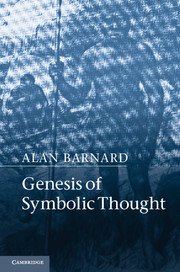4 - Ritual and religion
Published online by Cambridge University Press: 05 August 2012
Summary
Ritual and religion are central to human society. We find evidence of both ritual and religious belief in burials and, more interestingly and more fully, in rock art. As we saw in Chapter 2, other forms of physical remains may also betoken symbolic thought: etched ochre, worked ochre in general, shell beads and even aesthetically worked stone, all well over 70,000 years old and representative of Homo sapiens sapiens cultures developing by then in southern Africa. There are also beautiful figurines that may have been crafted by very early European H. sapiens sapiens more than 30,000 years ago. Examples in the Aurignacian (European Upper Palaeolithic) include, famously, various ‘Venus’ figurines, the ‘Lion Man of the Hohlenstein Stadel’ and other lion therianthropes (human and animal together) in stone and ivory. More recently, we have therianthropic representation in rock art, in both Africa and Europe as well as elsewhere, and a host of interpretations of it. Palaeolithic art can be and has been seen as hunting magic, as mythological or as theistic. It has been interpreted functionally, structurally, psychoanalytically, as reflecting economical conditions, as revealing of the evolution of the mind and so on (see Conkey 1999). Of course, some art may be one thing, and other art may differ in meaning – just as different religions may exist among different populations, or yet in the same population. Even ‘a religion’ may be a fluid entity, with its meanings malleable and in fact playful (Guenther 1979; Barnard 1988).
Since the nineteenth century, anthropological theory has always had something to say about the interpretation, the mythical or totemic foundation, the structure, the social function or the evolution and diffusion of religious ideas. Social anthropology has also provided a wealth of ethnographic data on all aspects of religion, including ritual and belief. This accumulated body of knowledge, along with the theoretical means to understand it, is one obvious place to start in seeking evidence for the origins of beliefs and rites. Another must be the comparative study of early and later forms of rock art and other material remains. In this chapter, I seek explanations for early religious belief and other associations.
- Type
- Chapter
- Information
- Genesis of Symbolic Thought , pp. 59 - 82Publisher: Cambridge University PressPrint publication year: 2012



